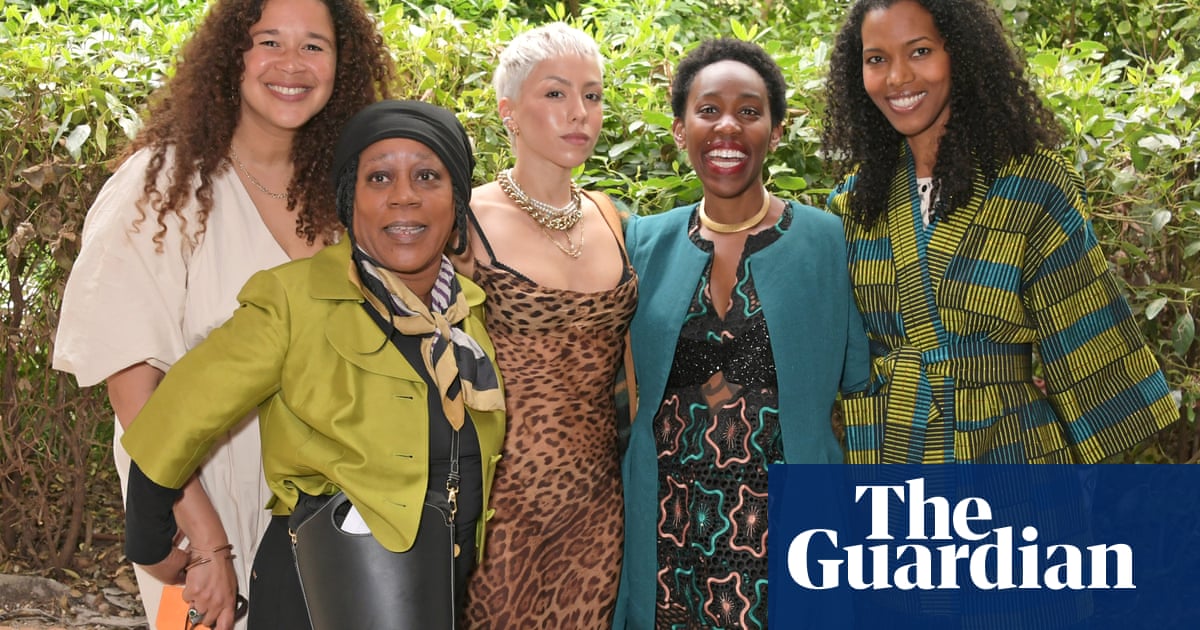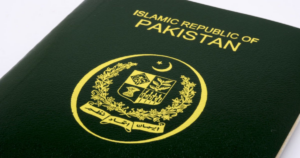
There is no shortage of art’s big beasts in Venice, as the world’s most prestigious international art event, the city’s biennale, opens to the public.
Georg Baselitz has made works to hang in the 18th-century stucco frames that once held portraits of the Grimani family in their palazzo. Marc Quinn is showing in the National Archaeological Museum. Anselm Kiefer has covered the walls of a colossal room in the Palazzo Ducale with paintings encrusted with shoes, clothing, metal, and even a ladder.
Arguably, though, the dominant spirit of the event lies beyond these impressively housed exhibitions. In the main venues of the biennale – the city’s Giardini and Arsenale – the overwhelming feeling is not of the lone, male, white artist. Instead, for the first time, female artists outnumber men – and by a ratio of roughly nine to one.
Cecilia Alemani, artistic director of the Venice Biennale 2022. Photograph: David Levene/The Guardian
Of the more than 200 artists the curator Cecilia Alemani is showing in her huge main exhibition, the vast majority are women. One of her venues, the international pavilion of the Giardini, contains no male artists at all, only women and a small number of non-binary and transgender artists.
“I have always worked with many women artists – and I think some of the most talented artists working today are women,” the Italian, US-based curator said.
Historically, about 10% of artists in the main exhibition have tended to be women, rising to 30% in recent years; in 2019, the UK-based curator Ralph Rugoff’s exhibition achieved a rough parity for the first time. Alemani’s show is approximately 90% women.
Małgorzata Mirga-Tas’s Re-enchanting the World in the Polish Pavilion, Venice. Photograph: Daniel Rumiancew/Zachęta National Gallery of Art
“I don’t care about quotas,” she added, “but it’s striking that people are obsessing about my exhibition and never found the dominance of men [in previous editions] shocking.”
Characteristic of the biennale’s atmosphere is, for example, the Polish pavilion: the Roma artist Małgorzata Mirga-Tas has covered the walls of the structure with tapestry-like patchworks, partly based on frescoes in the Palazzo Schifanoia in Ferrara, that pay homage to individual pioneering Roma women.
Next door to the Polish pavilion, Adina Pintilie’s talked-about Romanian pavilion, and her cast of collaborators, whom she called “wonderful, brave, soul searchers”, including gay, trans, and disabled people, are challenging normative views of relationships, the body and intimacy. In her film work You Are Another Me – Cathedral of the Body she was interested, she said, in “opening up different ways of relating to different bodies, different beauties”.
You Are Another Me – A Cathedral of the Body, by Adina Pintilie, Romanian Pavilion, Venice. Photograph: David Levene/The Guardian
Black women occupy some of the most prominent national pavilions: the sculptor Simone Leigh for the US; Sonia Boyce for Great Britain; and Zineb Sedira, who is of Algerian descent, for France.
Sedira, whose exhibition meditates on the history of Algerian, French and Italian film, said: “I’m a woman artist who works in a male-dominated world. The 1960s and 70s film world was definitely a man’s world. I really wanted to reappropriate that space as a woman, as an Algerian, as a Muslim, as a French, as a British.”
Like Boyce’s exhibition, which foregrounds Black female musicians, Sedira’s show is strongly embedded in ideas of friendship. The same is true of Alberta Whittle’s exhibition for Scotland, which reflects on the traumatic history of the slave trade and colonialism between Africa, Scotland and Barbados, where she was born.
Dreams Have No Titles by Zineb Sedira, French Pavillion, Venice. Photograph: David Levene/The Guardian
“I find it interesting that so many of us – Sonia Boyce, Simone Leigh – are members of the West Indian diaspora,” said the Glasgow-based Whittle. “It’s a perspective that has long been ignored.” Tender and touching despite everything, her work is made, said Whittle, “through a spirit of hope and rage”. It was, she said, “a fatiguing position” to be the first Black woman to represent her country, along with Boyce, Leigh, and Sedira. “That said, I feel honoured. It’s like showing my work in the big league.”
“The world is awakening and realising that it is finally time,” said Alemani. “I think it’s puzzling that though the American pavilion was built in 1930, and the British pavilion was built in 1912, it has taken until now for Black women to occupy them. But we need to go beyond the shock and use this time to reflect on the past and reinterpret history and understand how we got to this point.”
Alberta Whittle’s work reflects on the traumatic history of the slave trade and colonialism between Africa, Scotland and Barbados. Photograph: David Levene/The Guardian
Her exhibition, titled The Milk of Dreams, was “reconsidering the centrality of man, to celebrate a different relationship with the planet and nature and different species,” she said. That involved “decentring the western, usually white male perspective”. She pointed to the work, for example, of the Colombian artist Delcy Morelos, whose work was a discovery for her as she researched her exhibition, and whose large earth “maze” occupies one of the broad spaces of the Arsenale.
Morelos’s installation is “infused with tobacco, cocoa powder, cloves”, she explained. “You experience the art with the fullness of the body – something I have missed very much during the pandemic.”
The Venice Biennale continues until 27 November.




